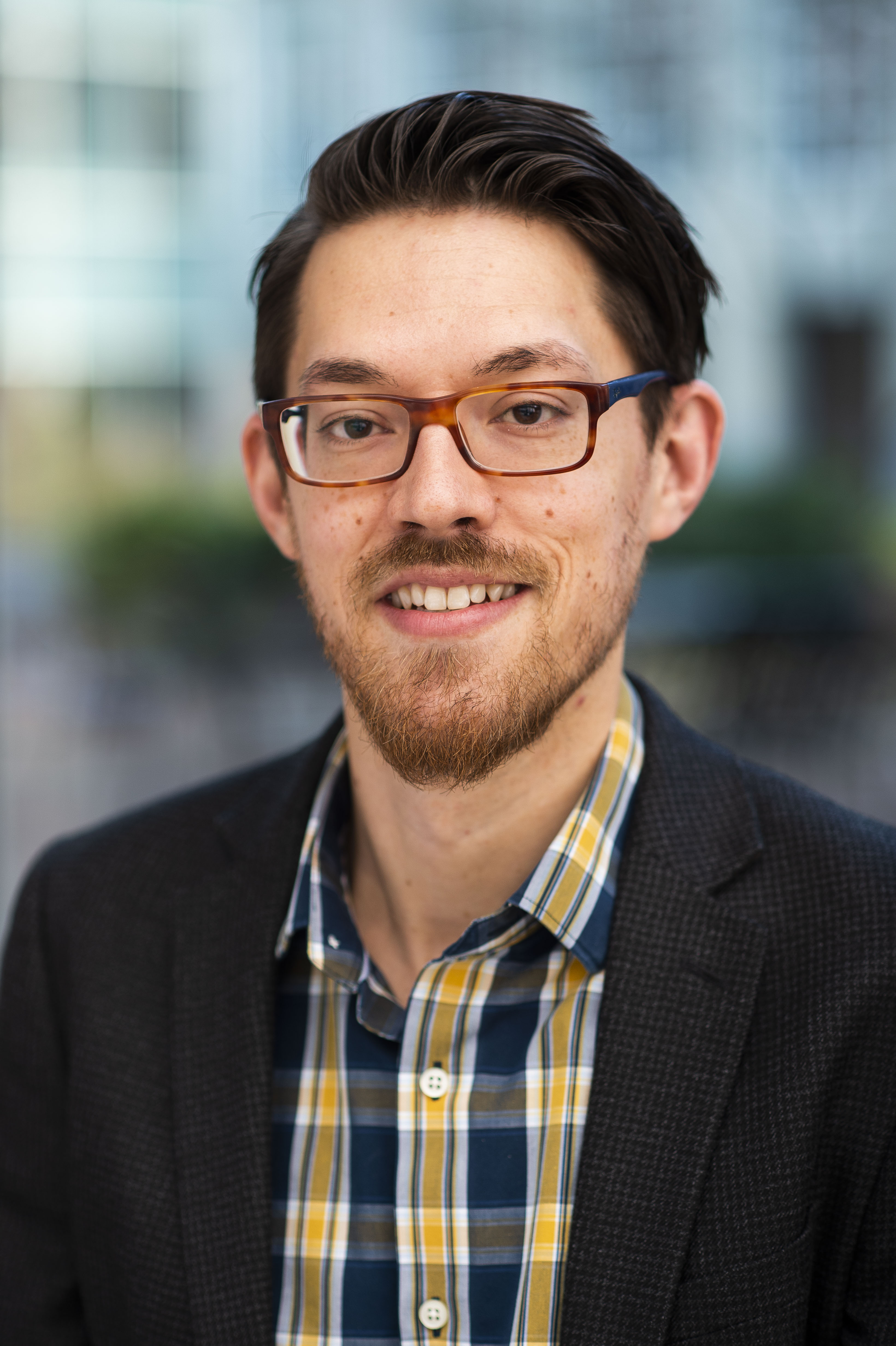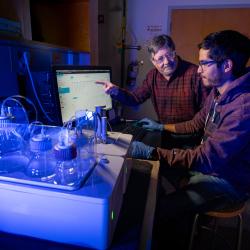UMD Chemistry and Biochemistry’s Myles Poulin Awarded $1.9M NIH Grant
Poulin will use the award to further his research in bacterial biofilm production, a microbiological process with implications for the diagnosis, treatment and prevention of disease.
University of Maryland Chemistry and Biochemistry Assistant Professor Myles Poulin received a $1.9 million Maximizing Investigators’ Research Award (MIRA) from the National Institute of General Medical Sciences (NIGMS), one of the National Institutes of Health (NIH).

The highly competitive five-year grant aims to give researchers the flexibility to pursue their research as it evolves, exploring uncharted territory and pursuing high-risk ideas, rather than being held to specific outcomes.
“I am honored to have received a MIRA grant from NIH and excited at the new research directions that grant will allow us to explore,” Poulin said.
This is the second year in a row a MIRA has been awarded to faculty in UMD’s Department of Chemistry and Biochemistry: Pratyush Tiwary received the award in 2021. Receiving the MIRA also comes on the heels of Poulin receiving a Faculty Early Career Development (CAREER) award from the National Science Foundation (NSF) in 2020.
“I am thrilled for Myles,” said Janice Reutt-Robey, chair of UMD’s Department of Chemistry and Biochemistry. “The MIRA is a great honor because it recognizes the importance of his biosynthetic research and his ability to uncover how complex molecules and assemblies are produced in living systems. With the biochemical and bioanalytical tools that he is developing, the scope of his research is tremendous.”
Poulin will use the MIRA to further his research into how bacteria produce biofilms—clusters of bacterial cells that are embedded in a self-produced matrix made up of biosynthetic products like carbohydrates, proteins and metabolites.
“My lab is interested in creating chemical and biochemical tools that allow us to look at the function of these components in the biofilm production process,” Poulin explained. “For example, the carbohydrates are complex sugars that make up the biofilm are core structural components, but their role in biofilm propagation is unknown. We’re trying to figure out exactly what types of interactions the carbohydrates have with biofilm components, and the mechanistic role these common nutrients play in sustaining living bacterial cells.”
Biofilm-forming bacteria contribute to 65% of infections in humans, which substantially increase the time, energy and costs required for a patient’s treatment and recovery. When bacteria produce biofilms, they create a defensive barrier that allows the bacteria to survive in many different environments. The biofilm protects the bacteria inside from hostile conditions, including antibiotics or a host’s immune system, which can make bacterial infections extremely difficult for medical professionals to treat using conventional methods. As a result, bacterial biofilm can further complicate and exacerbate infections.
“A lot of antibiotics don’t function well against cells within a biofilm because those cells are not metabolizing as quickly as normal bacteria cells do,” Poulin said. “Many antibiotics target those metabolic pathways. If the bacteria aren’t rapidly dividing, then it makes them more resistant to common antibiotics. That’s one reason why biofilms are so challenging to treat.”
The chemists and biochemists in Poulin’s lab are taking a multipronged approach to tackle that concern, examining biofilm from formation to dispersion. They are developing proteins that can help identify carbohydrate-protein binding interactions that play a role in how cells can stick together to create the biofilm matrix. Additionally, they are studying the role enzymes play in how biofilms are produced or broken down, engineering proteins that can act as biofilm dispersal agents—proteins that can break down the sugar components holding together the biofilm matrix.
The ultimate goal of Poulin's research is to identify ways to block or inhibit bacterial biofilm formation, especially in places such as hospitals. In biomedical settings, biofilms often form on surfaces like catheters or implanted medical devices. This type of contamination is a major cause of medical implant rejection and potentially life-threatening infections in patients.
“Being able to prevent biofilms from forming will be tremendously helpful to the health care industry,” Poulin said. “With this MIRA grant, we hope that our work will result in fewer rejections of biomedical device implants and improve overall patient health.”







